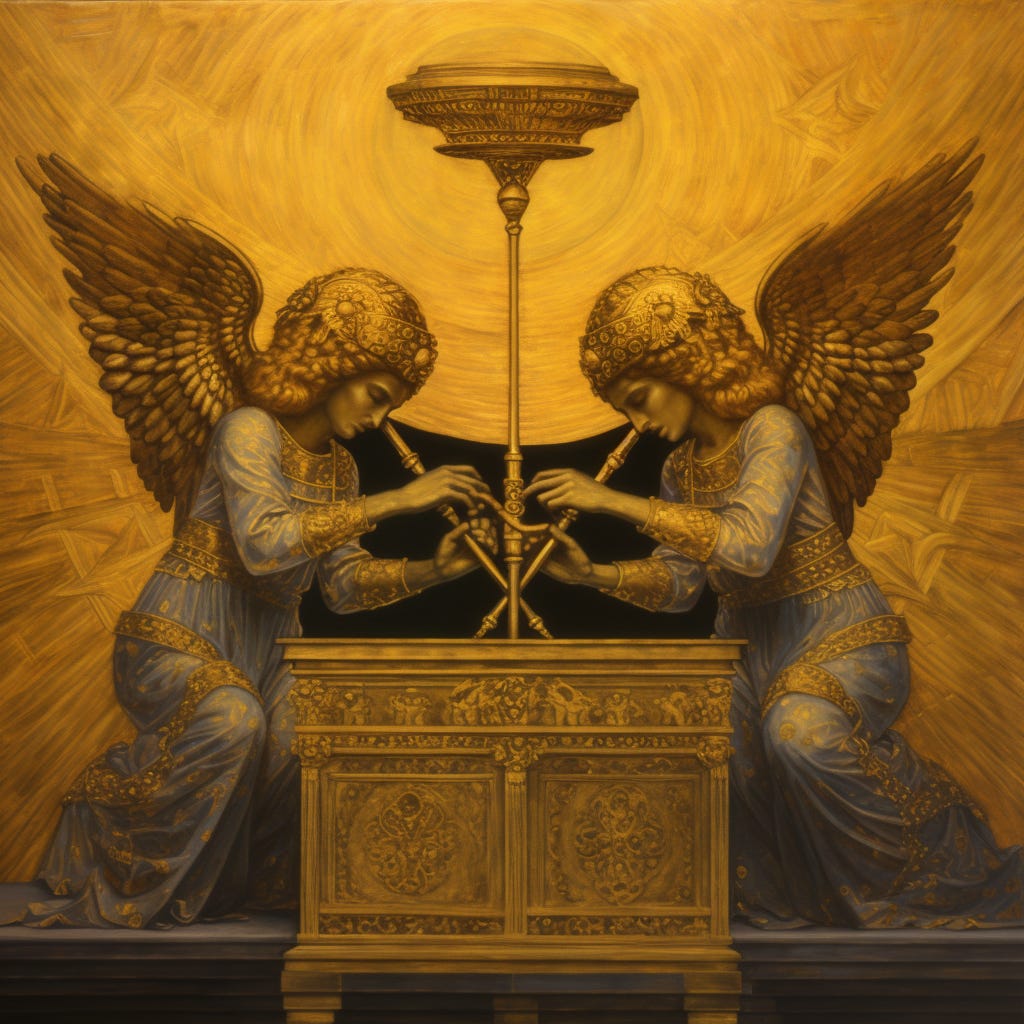Ch''S: Chevruta-As-A-Service
Cybernetic Systems and Traditional Forms of Paired Knowledge Generation
My favorite way of studying dense texts is with another person, best after an initial pass on my own. The insight and incisiveness that I am able to achieve in dialogue far surpasses what is in reach in monologue, and I take this comparative facility with dialogue as an indication to push it to its practical limit.
Acknowledgement of the utility of dialogue crops up again and again. In the tech world, pair programming has proven useful for broaching complex problems, facilitating the transfer of expertise from seniors to juniors, and giving juniors the opportunity to question possibly-outdated assumptions that plague the industry. In religion too — learning in community is highly valued, with self-seclusion being tightly gatekept practice reserved for the spiritually and intellectually mature. Chevruta is one tradition of paired study that I am familiar with, and it is one that has given me much joy, maturity, and opportunities to form deep bonds with others.
I am actively working on a project that sets out to encourage and fund theological and cybernetic research into the nature of prophecy and its cultivation in individuals in monotheistic communities. It is natural that I bring my preference for paired study to bear here. I also think it is correct.
Fundamentally, I wish to use Studying Pairs (SPs) as a composable1 tool for generating insights, with a heap of positive effects for each member of the SP, those that inherently come with paired study. The use of machines in human-oriented situations like this should always be to accentuate the human elements, mostly commonly to aid in postprocessing of human interactions (e.g., transcription) or to prepare for human interactions (e.g., language training software). I will not displace a human with a machine; I will not have humans converse with machines as though the latter is human2 — this is an abomination. No, I want to use technology to make the intense paired study of texts composable, which in turns will allow me to introduce creative incentives for its performance, and judiciously parcel out work, and orient the whole system towards a particular research end. I wish to incorporate my and others’ intense study into a cybernetic system preordained toward a particular, higher end.
At scale, I hope this becomes the formidable research arm of a larger effort to accelerate humanity into a prophetic age.
This idea came to me in an instant, and here I will disseminate it in an instant. In short:
A pair of people are assigned a piece of media, likely a text, to study intensely.
They can be asked to familiarize themselves with the media beforehand, or review it jointly. If text, the ideal is that they read it aloud and stop to discuss insights, questions, and challenges along the way. Tangential conversion is encouraged, as long as it is at least obliquely oriented towards the topic at hand. Care must be taken to ensure that the Studying Pair does not feel induced to perform.3Transcription.
Automated transcription renders the conversation as text, tagged with the text that inspired the conversation.Assessment and extraction.
Human or automated agents assess the transcript and summarize key points and extract key insights generated during the conversation. This is also tagged with a reference to the associated text. This is the output.Output handling.
The output generated in the last step can be used for personal and institutional reference over the short- and long-term, or behave as an input for another component of the broader cybernetic system — either another Studying Pair or some other consumer.
The latter use of the output mentioned above is fundamentally cybernetic, resembles neurons, and holds immense potential as a unit of construction. We will be able to parallelize, compose, and collate the analyses of a variety of materials, and with judicious orchestration, we may be able to break into a new knowledge production paradigm. As stated above: oriented towards a particular end, at scale this can become an arm of a formidable research institute.
There is a lot to be said about how blockchain technology and exotic financial instruments can be used to incentivize this sort of work — I look to CFang and her art for inspiration concerning this. You will hear more from me on those lines, and you will be able to use CFang’s works as a clue about where I’m headed with this.

https://en.wikipedia.org/wiki/Composability
This is an abomination.
The magnitude of this threat is great enough to have a substantial impact on the final design.


Thomas Jockin and I are kind of doing this. In March/April we read creative evolution together. In Jan/feb we read 7 habits of highly effective people. It’s been great we just go chapter by chapter and meet up on Monday mornings before work to discuss.